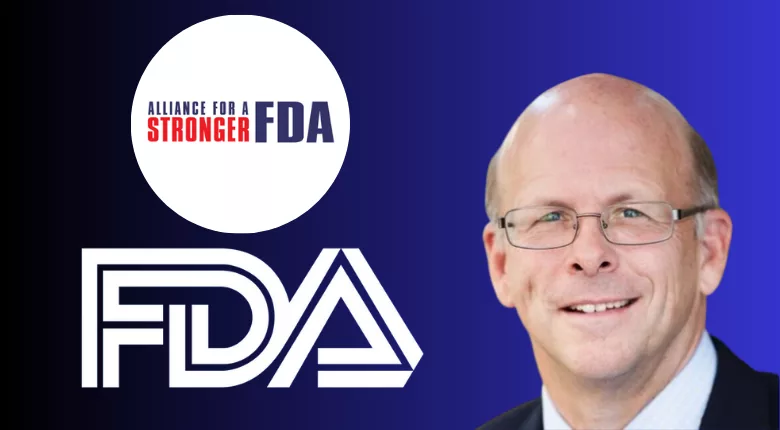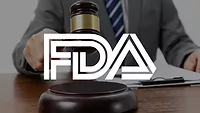FDA Deputy Commissioner Goes In-Depth About Human Foods Priorities, His Approach to Change

On November 13, 2023, the Alliance for a Stronger FDA hosted a webinar with James "Jim" Jones, the recently appointed Deputy Commissioner for Human Foods at the U.S. Food and Drug Administration (FDA), during which he discussed his priorities, plans, and approach to change at the agency. The first to fill this newly created role, Mr. Jones is charged with forging and leading FDA’s proposed unified Human Foods Program (HFP).
As the new Deputy Commissioner, Mr. Jones holds decision-making authority over all HFP entities, including resource allocation, risk prioritization, policy, major response activities involving human foods, and related Office of Regulatory Affairs (ORA) activities. He will set and advance HFP priorities across food safety and chemical safety as they relate to food and nutrition.
The discussion with Mr. Jones was moderated by Allison Bodor, CEO and President of the American Frozen Food Institute (AFFI), and Thomas Gremillion, Director of Food Policy at the Consumer Federation of America. Both Ms. Bodor and Mr. Gremillion are Alliance for a Stronger FDA board members. The Alliance for a Stronger FDA is a multi-stakeholder organization with more than 150 members devoted to advocating for increased appropriations for FDA and educating policymakers and the public about FDA's mission and responsibilities.
In her introduction for Mr. Jones, Ms. Bodor drew attention to his prior tenure at the U.S. Environmental Protection Agency (EPA), explaining how his work with chemical and pesticide legislation runs parallel to his new work in ensuring the safety of the U.S. food supply. Ms. Bodor also pointed out Mr. Jones’ involvement in the Reagan-Udall Foundation’s (RUF’s) independent review, which was completed in late 2022 with the aim of informing a “new vision” for FDA’s HFP. When Mr. Jones took the floor, he explained that, although his work at EPA does not necessarily make him a food safety expert, it has given him expertise in “getting things done” in the U.S. government, and highlighted the similarities between the processes of different government agencies. Mr. Jones also underlined that he worked closely with FDA’s Center for Food Safety and Applied Nutrition (CFSAN) while at EPA.
Overarching Issues and Laying the Groundwork for Reorganization
Regarding the RUF review of FDA, Mr. Jones stated that he was the only member of the panel that was “somewhat of an outsider” to food safety, although he had “a nexus with food.” He stated that the creation of a new, unified HFP was one of the fastest recommendations he has ever been party to. “The structure we are in the midst of replacing was designed to fail,” he said, as it was “led by two people with virtually the same job descriptions,” and that the importance for FDA’s human foods processes to be “taken apart and put back together under one leader” was apparent. Mr. Jones clarified that the issue lies not with FDA’s talent, but with its structure, except for one caveat: “The talent issue is not about the people who are here but the people who aren’t here,” he said, referencing the dearth of resources that FDA has to work with, which was another pain point addressed in the RUF report.
Next, to explain how he is approaching his work within his first months at FDA, Mr. Jones explained how the actual reorganization structure of the HFP is informing his priorities. A chart outlining the reorganization is to be released when it is made official, which could roughly be expected by June 2024, but an exact timeline is hard to estimate as it must first pass through several other federal bodies. According to Mr. Jones, FDA is “very close” to submitting the reorganization chart to the U.S. Department of Health and Human Services (HHS), after which it will go to the U.S. Office of Management and Budget (OMB), and then finally to the U.S. House Committee on Appropriations.
Looking for quick answers on food safety topics?
Try Ask FSM, our new smart AI search tool.
Ask FSM →
Although the reorganization chart will not be released for some months, Mr. Jones provided insight to its premise and how it is informing his work. The RUF report identified cultural challenges, specifically, slow decision-making, which Jones attributed to FDA’s structure and lack of clarity regarding who is at the top of the structure. This problem is already beginning to be addressed with the HFP unification under a single leader—Mr. Jones himself—who has final decision-making authority. FDA’s new HFP has three priorities: preventing foodborne illness, improving nutrition, and enhancing food chemical safety.
A Focus on Reducing Foodborne Illness
“Many reorganization priorities are designed to help [FDA] get better at reducing foodborne illness,” said Mr. Jones.
A new Office of Microbial Safety under FDA’s HFP will be formed with the main goal of preventing foodborne illness. Priority work mentioned by Mr. Jones for this office include bringing various laboratories together for the sake of efficiency; data-informed risk prioritization, which he said is especially important in a resource-constrained environment like FDA; compliance consolidation, specifically between ORA and CFSAN; moving toward a preventive orientation rather than a reactive mindset; and improving federal partnerships with state and jurisdictional public health departments, which also have a hand in foodborne illness prevention and response.
In response to later questioning about federal-state partnership optimization, Mr. Jones elaborated on the potential of the work to improve public health outcomes and stretch existing resources. He explained that a specific office for partnerships has been designed to focus solely on improving these relationships. He believes that by fully exploring all avenues for tighter state and federal collaboration and completely optimizing these relationships, relevant resources could be expanded by up to 15 percent.
Also in response to a later question from a stakeholder, Mr. Jones went into greater depth about what he meant by tightening FDA relationships with state co-regulators to better mitigate and respond to foodborne illness, specifically pertaining to information-sharing. Currently, FDA is working on “good problem formulation” to define the actual pain points that need addressing, but some regulatory and administrative issues preventing a free flow of information between states and federal agencies have already been noticed. Mr. Jones explained that, on the states’ side, there is a requirement to publicly release information shared by FDA related to foodborne illness outbreak investigations, even if the information is not conclusive. Since FDA has confidentiality responsibilities, the agency is then limited in what it can share with states early in a foodborne illness outbreak investigation. On the federal side, there is a lack of trust in FDA based on a concern that the agency will unfairly target certain sectors or entities based on information it is given.
Also related to microbial safety, in response to a later question, Mr. Jones said finalization of the Food Safety Modernization Act (FSMA) Agricultural Water Rule is a crucial item, and that the public can expect an update in roughly 6–9 months.
Nutrition and Chemical Safety
The second priority of FDA’s HFP relates to raising the profile of a Center for Nutrition. Mr. Jones described several initiatives in this area, including the development of front-of-pack labeling requirements, “healthy” labeling requirements (which he said may be finalized in the next 6–9 months), sodium reduction activities, and targeting added sugars. Mr. Jones said that, with metrics for U.S. nutritional health beginning to “point in the wrong direction,” it is more crucial than ever to elevate FDA’s prioritization of nutrition.
Finally, the third leg of FDA’s HFP is its work in chemical safety as it relates to food. Mr. Jones brought up the recently passed legislation in California banning four possibly toxic food additives in the state (the California Food Safety Act), and the questioning FDA has received about its approach to chemical safety in the wake of California’s action. “In my experience as a chemical regulator [with EPA],” Mr. Jones said, “The only meaningful way to get ahead of an issue like this is to have an ambitious agenda.” He explained that FDA’s new post-market chemical review plan is designed to take advantage of the burgeoning opportunity regarding food chemical regulation. He hopes to take aggressive enough action at the federal level that states do not feel inclined to respond to rising concerns with chemical safety by enacting their own patchwork of regulations.
In response to a later question, Mr. Jones stated that FDA will articulate its 2024 chemical safety work plan in the near future.
Process Issues, Funding, and Culture
Through his responses to questions from webinar attendees, Mr. Jones provided insight into his overall approach to leadership and process issues that he is excited about tackling, expressing his focus on stakeholder involvement and transparency. “The earlier and more often you have engagement with stakeholders before government sets its course, the better decisions will be made,” he said. “You don’t know what you don’t know… you have to talk to affected parties, or you don’t know what you’re missing.” Mr. Jones provided the example of this approach with FDA’s work on added sugars, for which he admitted the agency does not yet know its course. He also plans to take a stakeholder-inclusive approach to FDA’s Closer to Zero work.
Mr. Jones was also asked about FDA’s limited resources, which was highlighted in the RUF report, and where the agency would allocate additional funding should it be secured. He explained that chemical safety work has already been given an approximate $12 million budget increase over the last year, much of which will be devoted to improving infrastructure. Additionally, Mr. Jones said that FDA informed U.S. Congress that the agency would require a significant budget increase—in the ballpark of $76 million—if it is expected to successfully meet its inspection mandates. In general, Mr. Jones thinks that investing in information technology (IT) would make FDA much more efficient, and although he is not overly confident about the financial returns that would come from exploring creative fee structures for foods programs, FDA would look into it as recommended by the RUF report.
Finally, Mr. Jones described how he intends to change the internal culture of FDA, as well as the culture of collaboration between stakeholders and the agency. He said, “Culture comes from the top, so I am going to model behaviors [of transparency and earnest engagement] in as many forms as possible, while [verbally] reinforcing why I am doing what I am doing.”









